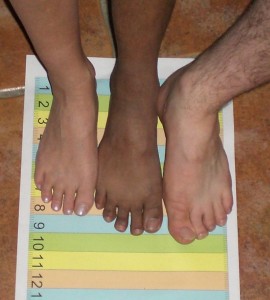Take care of your feet is something that people with diabetes hear often.
I think of the feet as the last stop for our healing white blood cells. They travel throughout the body all day long, and the feet are the farthest away. If there are any problems with circulation at all, the feet don’t get the same amount of attention.
Circulation problems can include cardiovascular disease, swollen ankles, high blood pressure – basically anything that affects the pumping of blood through the vessels.
As a kid I was told to always wear shoes. Basically, this is to protect feet from burns (hot sand, pavement), cuts (stepping on something sharp), or injury (dropping something on your foot). I was always confused about how shoes would help if I was carrying something extremely heavy, but I guess they might prevent more damage than would occur if I were barefoot.
if I was carrying something extremely heavy, but I guess they might prevent more damage than would occur if I were barefoot.
Here’s how to inspect feet (daily, if possible): run your hands over your feet – tops and bottoms. Look between your toes. If you can’t see any part of your feet, use a mirror or another person to help. Look for cuts, blisters, bruises, open areas, or anything that doesn’t look, feel, or smell right.
Signs of infection include odor, heat, redness, pain, swelling, oozing. If you see (or someone else sees) anything unusual, watch it closely and let your health care professional know about it. Healing can be slower in the feet, and there is more risk for infection.
A few more suggestions for protecting your feet:
- wear good socks and shoes (wool socks wick and keep your feet dry; wear shoes that give your feet good support and don’t rub)
- before you put socks and shoes on, check for foreign objects
- use a moisturizing cream daily to avoid dry skin and cracks
- avoid “bathroom surgery” – seek professional help for foot injuries/problems
